Many years ago a man from the BBC came to me and he asked me if the Dead Sea Scrolls will harm Christianity. I said to him that nothing can harm Christianity. The only thing which could be dangerous to Christianity would be to find a tomb with the sarcophagus or ossuary of Jesus – still containing his bones. And then I will surely hope that it will not be found in the territory of the State of Israel. –David Flusser [1]Quoted by Neil Silberman, The Hidden Scrolls (New York: Putnam, 1994), p. 129.
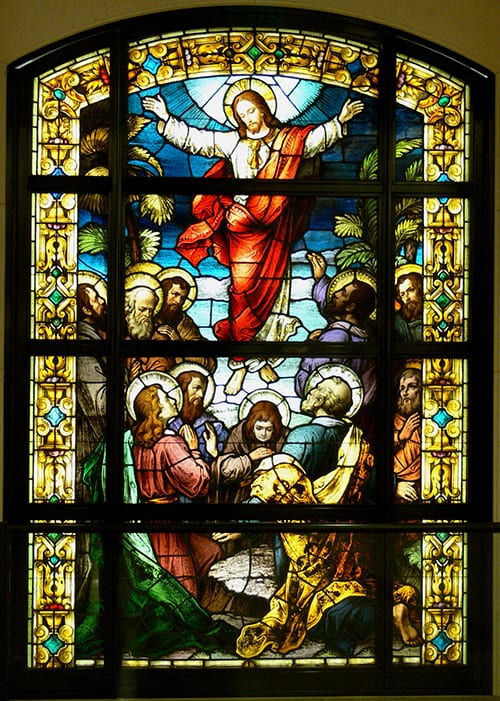
In future years I believe that Easter Sunday, April 5, 2015 will be remembered as a pivotal date upon which the evidence identifying the ancient tomb in Talpiot, a south suburb of Jerusalem, as that of Jesus of Nazareth and his family reached a critical mass in favor thereof. The story in the New York Times, “Findings Reignite Debate on Claim of Jesus’ Bones,” reported by Isabel Kershner and published prominently on page A-4 marked a watershed moment. You can read my preliminary analysis here, “The Controversial James Ossuary and the Talpiot Tomb.” It might take a decade or even a century, who knows, for the implications of this evidence to be widely acknowledged by historians, theologians, and the public–but I believe that day will come.
In this post I want to specifically address the April 9th 2014 CNN piece, “Jesus’ Tomb Story: Does the Evidence Add Up?” by colleagues Joel Baden and Candida Moss. After rehearsing the basic “Jesus tomb” story, including the latest claims about the James ossuary originating in that tomb, Baden and Moss offer their summary assessment:
It is a compelling story. But it is also a fragile one. This small group of scholars, scientists and filmmakers has presented us with a intricate puzzle, in which all the pieces have been perfectly aligned. But pick up any single piece to examine it more carefully, and it crumbles to dust.
Before this latest evidence placing the James ossuary in the Talpiot “Jesus” tomb, I thought the case of identification with the Jesus of Nazareth and his family was quite strong. Given the collective evidence related to both the “Jesus” tomb (Tomb A) and the nearby “Patio” tomb (Tomb B)–the one under the condo building–less than 60 meters away, I was 90% persuaded–if one can put a “percentage” on such things. The evidence I find so persuasive is summarized here: The Case for a Jesus Family Tomb: A Comprehensive Overview of the Evidence and The Tombs at Talpiot: An Overview of the Jesus Discovery. [2]The Talpiot “Jesus” tomb was exposed by a construction blast on Thursday morning, March 27, 1980–the weekend before Passover and Easter. The tomb and its contents were ignored for … Continue reading
If one adds the ossuary inscribed “James son of Joseph, brother of Jesus,” to the mix, the probability case is closed. There is a succinct summary by Jerry Lutgen, “The James Ossuary in Talpiot: More About Probability,” covering all the variables, and showing the probability with the James ossuary added to our cluster reaches 100% or virtual certainty.
Baden and Moss proceed to go through these “pieces” of evidence, one-by-one, seven in all, asserting that not a single one of them hold up. The Baden and Moss piece is quite remarkably comprehensive, but at the same time succinct, and I commend them for putting before a wide audience most of the essential issues related to “The Jesus Tomb Story.”
But there is a problem. Not a single one of their seven assertions hold up! This is a bold assertion–all the more so as I am addressing the arguments of two colleagues whom I respect greatly. Rather than crumbling to dust quite the opposite is the case, as we shall see.
Baden and Moss have unfortunately misunderstood, or misstated each of the seven “pieces” they propose to examine. I will go through them one by one and offer what I hope might be some helpful response and evaluation:
1.The box that supposedly says “Jesus, son of Joseph” definitely says “son of Joseph,” but that first, crucial name is very much in doubt. One scholar suggested that it says Hanun, just to give a sense of how uncertain the reading is.
This first assertion is the one I find the most surprising–that the name “Yeshua” is “very much in doubt.” I am at a loss to understand how Baden and Moss have arrived at this conclusion or could possibly support it. I discussed the inscription with Frank Cross back in 2004 and he stated without the slightest equivocation that it read “Yeshua bar Yehosef,” though pointing out it was informally written and badly scratched–which is often the case with such ossuary names. Rahmani, Kloner, Zissu, Rollston, Pfann, Ilan, and Price/Misgav, who have all formally published on the subject, all agree. Far from the reading being “very much in doubt,” I can’t think of a single epigrapher who disagrees or proposes an alternative to the “Yeshua” reading.

It is true, as Rahmani (CJO: 704) [3]L. Y. Rahmani, A Catalogue of Jewish Ossuaries and Price/Misgav (CIIP 1:1: 474) [4]Corpus Inscriptionum Iudaeae/Palestinae, Vol 1, Part 1, eds. Cotton, et al. note, that the scratches on the ossuary running through the letters make it more difficult to read, but as Rahmani notes, one can separate those from the incisions rather assuredly–leaving the letters themselves as: Yod, Shin, Vav,’Ayin. When one examines the ossuary directly, as I have done, the Yod is a bit difficult to distinguish due to pitting and scratching but the Shin, Vav, and ‘Ayin are absolutely clear. Given the proper names we know from the time there is simply no other alternative.
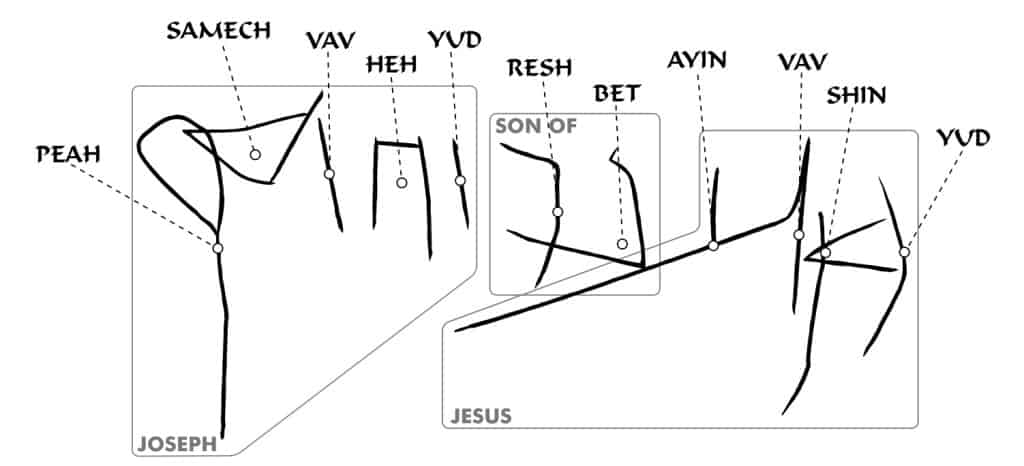
The reading is further corroborated by the clear, non-graffiti inscription (IAA 80.501), “Yehuda son of Yeshua’, from the same tomb, likely the son of this Yeshua. So far as I know everyone is in agreement on this reading, including everyone at the 2008 Princeton conference in Jerusalem devoted to evaluating “The Tomb of Jesus and his Family” (see note 2 below).
Baden and Moss completely misunderstand the position of Stephen Pfann, whom they reference without naming, who once suggested a reading of “Hanan.” Pfann and I have discussed this tomb countless hours over the years, we excavate together at Mt Zion and are close friends. We disagree on just about everything related thereto–but not the inscribed name “Yeshua.” Stephen does not dispute the reading “Yeshua,” (as Baden and Moss imply here) but has argued that Yeshua was written over a prior name that he now thinks “with some imagination” might have been Yudan. [5]See Pfann, “Demythologizing the Talpiot Tomb,” in Charlesworth, ed. The Tomb of Jesus and His Family, pp. 174-183. Price/Misgav (CIIJ: 474) characterize Pfann’s theory as … Continue reading
Accordingly, for Baden and Moss to assert that the name Yeshua is “very much in doubt” and that the reading of the name Yeshua “turns to dust” upon examination is simply untrue and misleading to say the least.
2. And the box that supposedly belongs to Mary actually says “Mariam and Mara,” which suggests that there were actually two women buried in that single ossuary. It is also a problem that while all the other ossuaries are inscribed in Aramaic, this one is in Greek.
I am not at all clear on why the “Mariamene/Mara” ossuary inscribed in Greek is a problem, in contrast to the other five inscriptions being in Aramaic. Ossuary inscriptions are often in Greek (30%), including lots of examples of the name “Mary,” alongside those in Aramaic or Hebrew in the same tomb, and sometimes Greek and Hebrew mixed on the same ossuary (10%). Further, if one wanted to argue that the Mariamene of this ossuary might be identified with Mary of Magdala, a wealthy woman from that very Hellenized city, who had friends even in Herod’s court (Luke 7:2-3), having a finely decorated ossuary (in contrast to the others) inscribed in Greek, seems to fit her well.
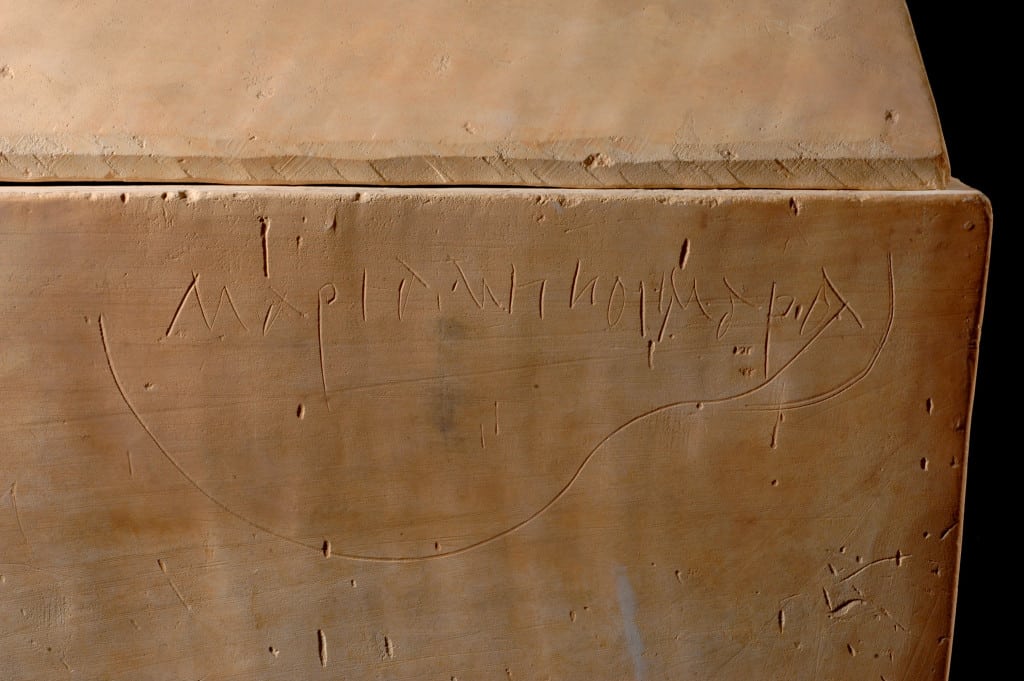
As to the question of one or two women, it is of course possible we are dealing with two names here, and several epigraphers have argued that Rahmani’s original reading of “Mariamne who is also called Mara” (CJO: 701) should read Mariam and Mara. [6]I continue to be convinced, with Leah Di Segni and others, that Rahmani’s reading of the name as Mariamne is correct, based on the precise name in the same letter form on the lid of another … Continue reading Even if that be the case, as Price points out (CIIP 1:1:477) one can still read the inscription as “Mariam who is also (known as) Mara,”–referring to one woman. This remains true in Greek today; a girl with the two names Sophia and Maria could be referred to as Sophia kai Maria–Sophia also known as Maria. So this objection is really no objection at all.
Further, even if one granted two women named Mary and Martha–it would be hard to eliminate them from any Jesus family tomb–given the intimate position of the sisters Mary and Martha in the gospel traditions, their close relationship to Jesus and his family, and a possible conflation of “Mary of Bethany” with Mary Magdalene, as Jane Schaberg and many others scholars have suggested.
3. As for the names on the other ossuaries, some of them fit perfectly well into the Jesus story (Joseph, for example, Jesus’ younger brother). Others, however, not so much: Matia (Matthew), not a member of Jesus’ family according to the Bible, and, more problematically, Yehuda bar Yeshua — Judas, son of Jesus.
The main problem with this objection is the assumption that we have something called “the Jesus story” that can serve as a control for what fits or does not fit archaeologically with the historical Jesus. What we have to realize is that our textual traditions (primarily the N.T. gospels) are not only late (post-70 CE), but extremely limited and fragmentary theological proclamations. Understandably, they are mostly silent in providing any basis for such exclusionary statements as to who “belongs” or does not belong in the “Jesus story”–much less the extended Jesus family. So the assertion that “Matthew” is not a part of the Jesus family “according to the Bible” is naive and misleading.
Think about all we do not know.
We don’t know a single name of any of the wives or children of any of the 12 apostles–much less the wider group of disciples. Are we to assume these important individuals never existed? Luke mentions “70” disciples that Jesus appointed and sent out but we don’t know the name of a single one of them–much less any wives or children! Fortunately, Mark (followed by Matthew) gives us the names of four of Jesus brothers–James, Jose, Simon, and Jude (Mark 6:4). But true to form, Jesus sisters are neither named nor enumerated, nor are their husbands if they were married.
When women and children are left out of the “Jesus story” it is not because they did not exist, but because they were not considered important to name. Luke and John never name any of Jesus’ brothers. So our knowledge of the names of these four brothers hangs on the “thread” of a single verse in Mark (whom Matthew uses as his source). Were there more than four? We have no way of knowing. What about half-brothers or step brothers–assuming these four are children of Mary? Paul names James but none of the others, and mentions none of their wives by name (1 Corinthians 9:5). We do get Jude’s name, as a brother of James, from the letter bearing his name and Hegessipus, a 2nd century Jewish convert to Christianity, mentions the sons (or grandsons) of Jesus’ brother Jude, arrested as descendants of David, during the reign of Domitian (Eusebius, Church History 3. 19-20). So we know Jude was married with children, but we surely do not know anything about his family in our New Testament sources.
Can we really say with any confidence that a name such as Matia/Matthew does not belong in a Jesus family tomb? I would argue quite the opposite. We do know that the name Matthew (in various forms: Matthat, Mattathias, Maath, et al.) is the most frequent name in the immediate family lineage of Jesus–there are four listed in three verses (Luke 3:23-26). It is not a particularly common name (2.5% of males, contrasted with Joseph at 8.6%), so since it is particularly associated with the Jesus family line its presence in the tomb is not so surprising. Mark tells us that Levi, also know as Matthew, who is one of the 12, is a son of Alphaeus (2:14), as are James and presumably Jude, his brother or son (Mark 3:18 and Acts 1:7). There is a high mathematical probability that these three are related and quite arguably brothers of Jesus [7]See Andrew Sill, “The Apostles and Brothers of Jesus,” in Charlesworth, The Tomb of Jesus and his Family, pp. 434-443.
But more to the point, we would not expect any identifiable tomb from the period to contain only names of whom we were aware from our literary sources. Mark Goodacre, who advised Baden & Moss on their article, has often argued that the names Matthew and Jude son of Jesus in this tomb are outliers and thus should count against this being identified with Jesus of Nazareth.
Let’s take two tombs of individuals we can identify from our 1st century literary records–the high priest Joseph Caiaphas (John 18:13 et al., Josephus, Antiquities 18:35) and Simon of Cyrene, the man impressed to carry Jesus’ cross, and his sons Alexander and Rufus (Mark 15:21). The Caiaphas tomb (CIIP: 461-465) had five inscribed ossuaries of a total of 12, but other than “Joseph son of Caiaphas” we can’t identify any of the other family names from our records (Qafa, Shalom, Shem, Miriam). We have no idea of the name of the high priest’s wife, or children, or any others of the family, but the presence of these names hardly disqualify the tomb from being that of the high priest Caiaphas mentioned in our gospels. In the case of the Simon of Cyrene family tomb (CIIP: 324-332) nine of the eleven ossuaries were inscribed, with a mixture of Hebrew and Greek, but we don’t know any the names from our Jesus story other than Simon and Alexander his son (i.e. Horea, Arristoboula, Ya’akov, Mnaso, Sabatis, Sara, Thaliarchos, Philiskos, Ioanes), but that would not preclude us from identifying this as the likely family tomb of Simon of Cyrene and his son Alexander–who are named by Mark. [8]See Tom Powers “Treasures in the Storeroom: Family Tomb of Simon of Cyrene,” Biblical Archaeology Review (July-August, 2003), pp. 46-51, 59. A version of Power’s analysis can be read at here.
The same holds with any wife or child of Jesus–or of any of his disciples. It is true that the figure of Jesus is more prominent in our records than Caiaphas and Simon and Alexander, but in terms of personal biographical information we know precious little. As a Jewish teacher in his 30s Jesus was likely married, but our records of Jesus’ life and teachings are not history or biography but theological presentations of the divine Son of God, asexually born of a virgin (Matthew and Luke), or descended from heaven (John), with the divine authority of God himself on earth to forgive sins (Mark).
The one most likely candidate for a wife of Jesus, given all we know of her from later sources, is Mary Magdalene, who mysteriously shows up at Jesus crucifixion and who is mentioned even ahead of Jesus’ own mother as taking charge of the intimate task of washing his naked corpse and anointing it for burial. She is also “first witness” of Jesus’ resurrection and appears to have had the role of both apostle and leading teacher–even above the male disciples–but her place and importance is ignored or muted in Paul, our Gospels, and the book of Acts, as Jane Schaberg, April DeConick, Ann Graham Brock, Karen King and many others have shown. I have changed my mind on this issue of a “married Jesus” since I published my book, The Jesus Dynasty in 2006. I present my reasons in a series of posts, “There’s Something About Mary.” [9] See, “Schaberg’s Resurrecting Mary Magdalene: A Review, and Karen King, The Gospel of Mary of Magdala: Jesus and the First Woman Apostle (Polebridge Press, Santa Rosa, California, 2003)
Of the “Judah son of Jesus” in this tomb we know little–other than he is the son of Jesus. The inscription is formally written, the ossuary is nicely ornamented (like Mariamene but in contrast to Yeshua, Mariah, Matai, and Jose), and it is one of the smaller ones in the tomb–perhaps indicating Judah died at a young age, which also might account for his obscurity. Here I refer the reader to Kilty and Elliot’s excellent contribution at Bibleinterp.com: “On Yoseh, Yosi, Joseph, and Judas son of Jesus in Talpiot.” It is also entirely plausible, as James David Audlin has argued, that early Christian traditions about the desposyni (δεσπόσυνοι) or those “belonging to the Master,” refers not just to ancillary family members (nephews, cousins, etc.) but to Jesus’ own offspring. [10]See his article, “Father Jesus: Clement’s Agraphon and Julius’s Desposynoi Suggest Widespread Early Belief that Jesus had Children.” Hegessipus, a 2nd century Jewish convert to Christianity, mentions the sons (or grandsons) of Jesus’ brother Jude, arrested as descendants of David, during the reign of Domitian (Eusebius, Church History 3. 19-20). So we know Jude was married with children, but we surely do not know anything about his family in our New Testament sources.
The Talpiot Jesus tomb contains six inscribed ossuaries out of the nine in the Israeli archives, which is a very high percentage (66%). In contrast Rahmani puts the overall percentage of inscribed vs. non-inscribed ossuaries in the Israeli State Collection at 25.2% (231 of 917). If the Jesus tomb had a set of names such as Eleazar, Menachem, or Daniel, for instance, or names of women such as Sarah, Bernice, or Alexandra–none of which can be identified with Jesus’ family and its wider circles–it would be a real stretch to try and identify it with Jesus of Nazareth. In surveying all the other known tombs with ossuaries inscribed with any form of the name “Jesus” in Greek or Aramaic–and there are only 18–none of them could be the tomb of Jesus of Nazareth, either because of invalidating patronyms (Jesus son of Matthew, Jesus son of Judas, Jesus son of Dositheos, et al.) or entire sets of outlying names (Chares, Eiras, Erotas, Doras, Megiste, Ariston, Helena, Shelamzion, Chananiya, Shapiraet et al.). All told we have over 600 inscribed ossuaries from approximately 900 tombs so far exposed in the necropolis of ancient 1st century Jerusalem. [11]See footnote 6 in my paper “An Overview of the Jesus Discovery,” archived here and a breakdown of all the other names in the Talpiot tomb and where else they occur CIIPNotes6-13-2011. This alone does not prove the Talpiot tomb is Jesus’ tomb, but it does undermine the constantly repeated claims that these names are extremely common and there are lots of other tombs with such a set of names. That is simply not the case.
4. Supporters of the theory regularly point to the remarkably collocation of so many biblical names in a single tomb. But as most every other scholar has pointed out, these were just about the most common names in that period, especially Joseph and Mary.
Of all the objections to identifying the Talpiot “Jesus” tomb with Jesus of Nazareth and his family this assertion, that the “names are common,” one hears the most often. The implication is that just about “any tomb” of the time might have this cluster of names. I can’t count the times I have heard this, usually as the first thing coming out of the mouth of a naysayer. The Talpiot tomb is the family tomb of “some” Jesus, maybe “Jesus the baker,” or “Jesus the cobbler,” but there is no reason to think it might belong to Jesus of Nazareth. This assertion is simply incorrect. It is the cluster of names together, based upon name frequencies, that one has to guage. Rather than belabor the point, that has been so extensively demonstrated by a range of experts, I refer the reader to Kilty and Elliot’s excellent articles, “Talpiot DeThroned,” and “Regarding Magness and Talpiot,” along with the further statistical studies to which they link.
I suspect the mantra “the names are common,” will eventually become moot once it becomes wholly evident, based on Aryeh Shimron’s latest evidence, that the “James” ossuary also belongs in the cluster.
5. The evidence from the tomb next door — the ossuary with the early Christian symbol of Jonah and the fish on it — is equally hard to swallow. It seems that the only people who see a fish on that box are those who already thought that Jesus was buried next door; just about everyone else sees an abstract geometric pattern, or perhaps the depiction of a jar.
This is simply incorrect. Two of our finest epigraphical experts, Rachel Hachlili and Émile Puech agree that we have the inscription YONAH written across the image of a fish, and neither of them think the “Jesus” tomb has anything to do with Jesus of Nazareth. James Charlesworth agrees, but does not think the Yeshua in the tomb is Jesus. Any Israeli child on the street can read the inscription: Yod, Vav, Nun, Heh.
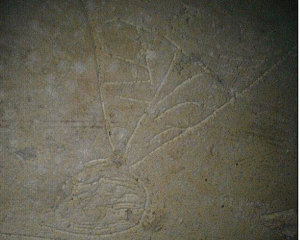
Many of my colleagues in our initial ASOR month-long blog discussion in March 2012 that was devoted to The Jesus Discovery first identified the iconic image as a nephesh or tower–but that was quickly abandoned in a couple of days when someone pointed out such a tower would be upside down! Subsequently many settled on the idea of a jar or amphora. [12]See “It’s a Bird, It’s a Plane, It’s a Fish.” I don’t recall anyone arguing the image was an “abstract geometrical pattern,” so I am not sure to what Baden and Moss refer in that regard. But that was before Charlesworth identified the name YONAH on the mouth of the fish/jar. But why write “Jonah” on the mouth of a jar? And even with some imagination the image itself resembles no jars or amphora images on any other ossuaries, coins, or art from the period.
I remain convinced we have in Talpiot tomb B our earliest depiction of the “sign of Jonah,” as a symbol of resurrection–an image we associate with the early Jewish messianic Jesus movement.
6. As for that inscription about God raising someone up, it seems that this was a case of mistaken reading. The Greek most likely says something far less interesting: “Here are bones. I touch them not. Agabus.” Agabus would be the name of the deceased, perhaps.
It is surely the case that four or five alternative readings of the Greek inscription on the ossuary in Talpiot tomb B have been proposed, see my discussion here comparing each of them, but it is not established that any reading differing with Rollston’s proposal, favored here by Baden and Moss, is a “mistaken reading.” The different proposals turn upon rather technical matters, as is often the case, namely how one reads one ambiguous letter (Serif Iota or Tau) and how one understands the spelling and grammar. Here is an example in English that is somewhat parallel:
God
Owns
All
Eggs
Should we read this as “God Owns All Eggs” or “Go down Sal Leggs,” with the possessive of the name Sal understood and Legs misspelled? I favor the simple reading, given the context in this tomb, next to our Jonah inscription and image. Here is the clearest camera shot we were able to get:
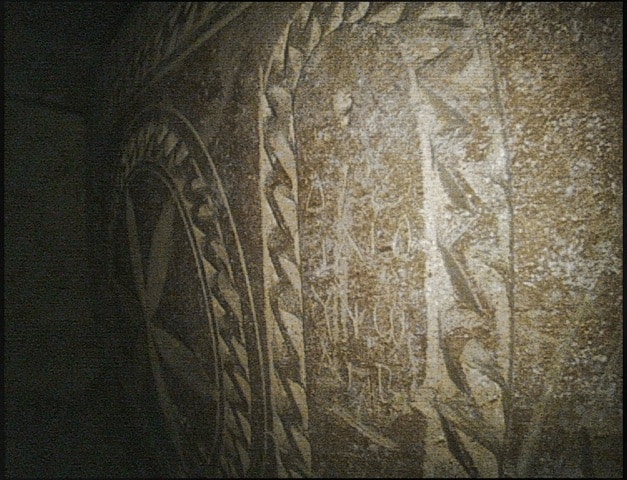
The four line Greek inscription can be simply read: O Divine IAIO [Yahweh], Raise up! Raise up! [Hagbah] or perhaps, I, Divine IAIO [Yahweh], raise up! Raise up! [HagbahI]–with alternating bilingual Greek and Hebrew transliterations. This is a perfectly acceptable reading and it reflects precisely the cry of Jonah in the belly of the fish (Jonah 2:2, 5-6). To take the final three letters (ΑΓΒ) is a cipher for the name–Agabus (Αγαβας), as Richard Bauckham first suggested, and Rollston accepted, is possible but seems a stretch.
7. Then there is the James ossuary. The question of the authenticity of the inscription on the box — the ossuary itself is certainly ancient — is so fraught that the dealer who owns it was taken to trial for antiquities fraud.
Even if the trial ended without proving claims of forgery, we have no idea where the artifact came from.
What’s more, almost every expert in ancient epigraphy has concluded that while the name James seems authentic, the words “brother of Jesus” are patently from a different hand, and most likely a much later, if not modern, addition.
It is simply not the case that “almost every expert in ancient epigraphy” has so concluded. It is of course possible the words “brother of Jesus” were added in antiquity by a different hand, though neither epigraphers André Lemaire of the Sorbonne nor Ada Yardeni of the Hebrew University, think so. Both testified at the forgery trial that the inscription was authentic. Orna Cohen established that there is original patina in the words “brother of Jesus” and Yuval Goren later changed his testimony and agreed–despite his view that the inscription was faked. The entire James ossuary controversy is too complex to rehearse here but here is a overview with relevant links for those wanting to delve deeper, “What’s What Regarding the Controversial James Ossuary?“
Baden and Moss close their piece expressing doubt about the validity of Dr. Aryeh Shimron’s latest chemical tests as reported in the NYTimes story and asserting that any tomb of Jesus containing his bones would have undermined early Christian faith in Jesus’ resurrection. Dr. Shimron’s credentials are impeccable and I am quite certain the tests he conducted will hold up to peer review. As far as the origins of the earliest Christian views of Jesus’ resurrection I have laid out my own analysis in two comprehensive posts: “How Faith in Jesus’ Resurrection Originated,” and “Why People Are Confused about the Earliest Christian View of Resurrection of the Dead.” I am convinced that the material/archaeological evidence we find in the Talpiot tomb in fact complements a critical analysis of our historical texts.
I wish that Baden and Moss had given us a bit of a glimpse as to what they think, as historians, regarding the dead body of Jesus–if it was not buried in a tomb in Jerusalem what might have conceivably happened to it? I assume they do not think Jesus was taken to heaven and simply disappeared–as scores of legendary figures in the Hellenistic period were believed to have done. If not, it seems likely Jesus was reburied in a second tomb, see “The First and Second Burials of Jesus.” [13]No one is claiming that the Church of the Holy Sepulchre as the temporary tomb of Jesus, near the place of his crucifixion is invalided by the discovery of the Talpiot “Jesus” tomb as is implied … Continue reading



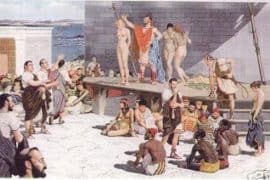
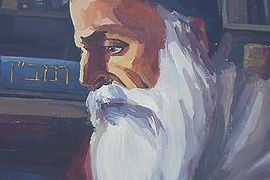
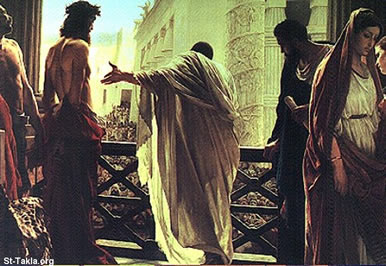
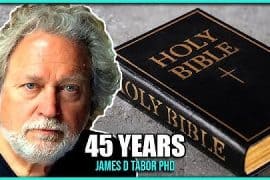
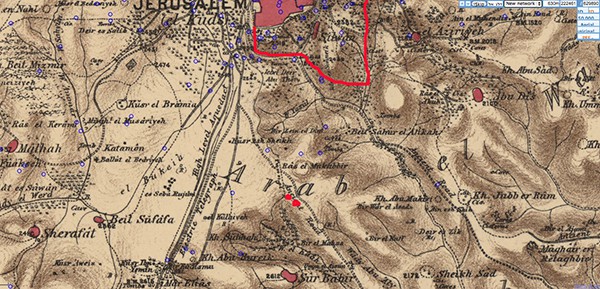
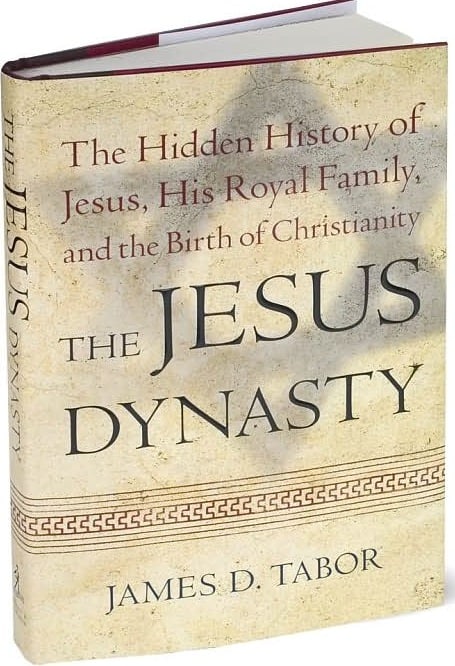
Comments are closed.